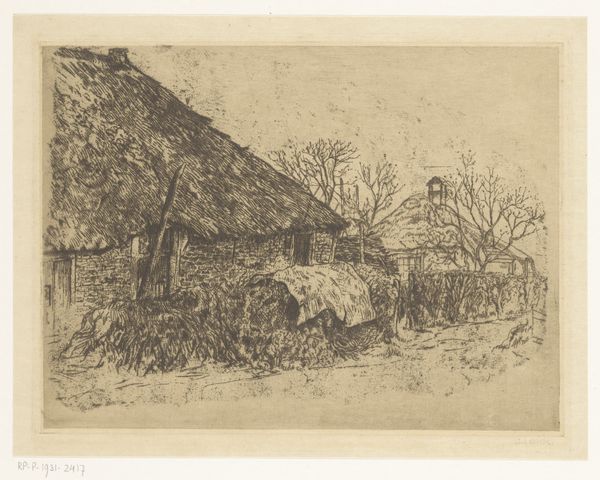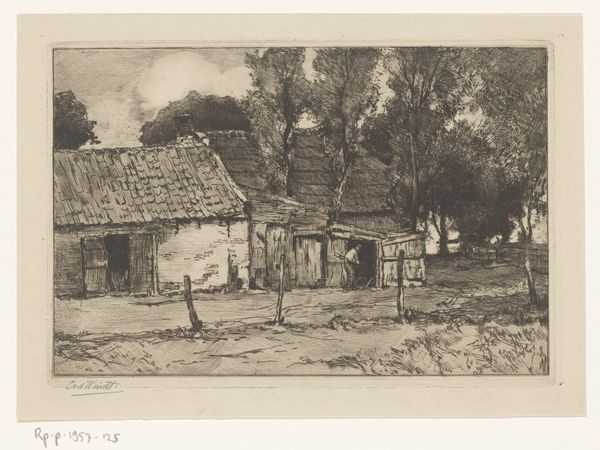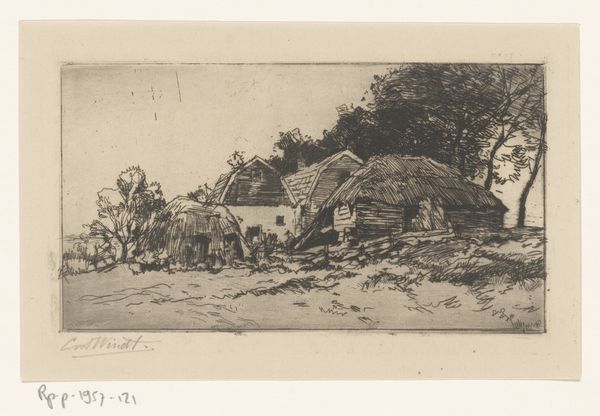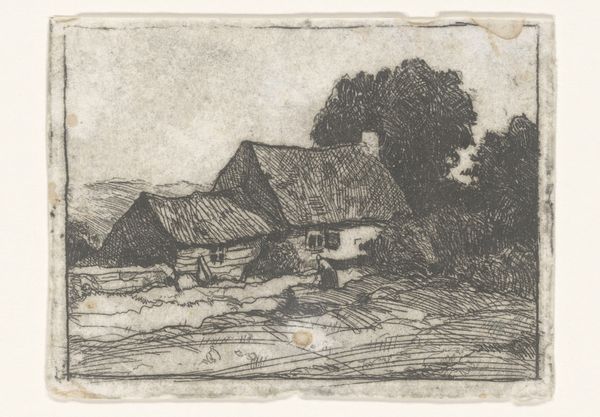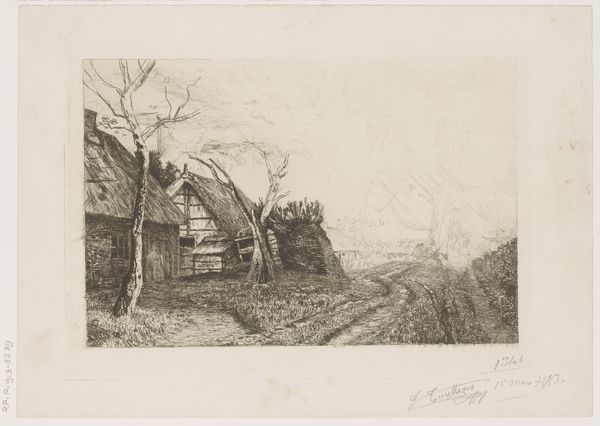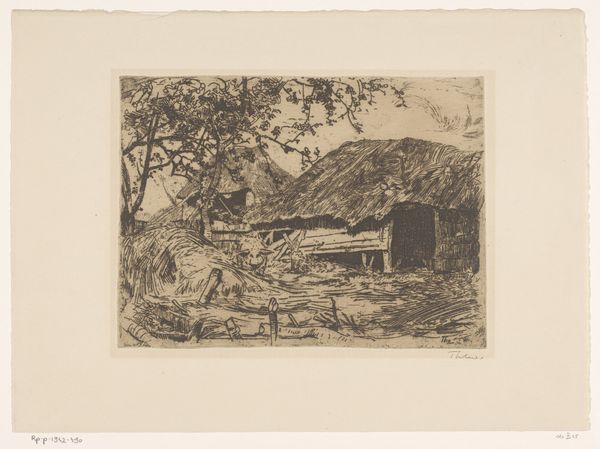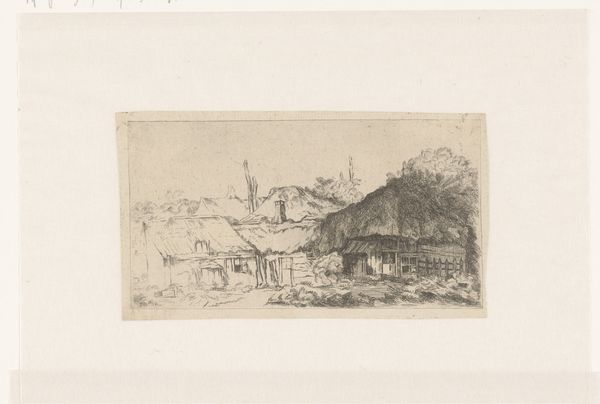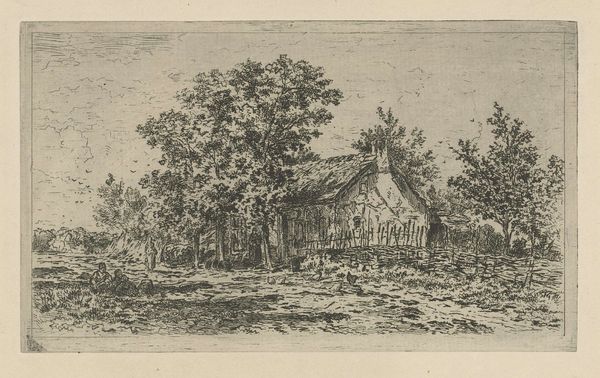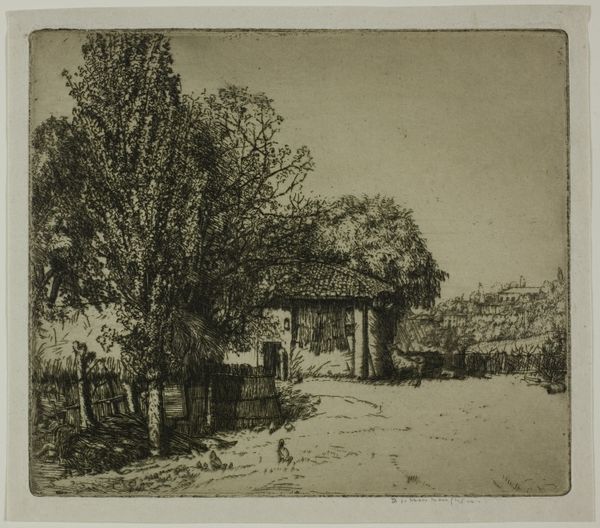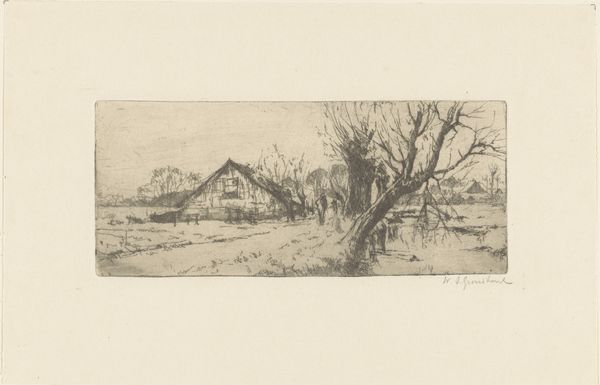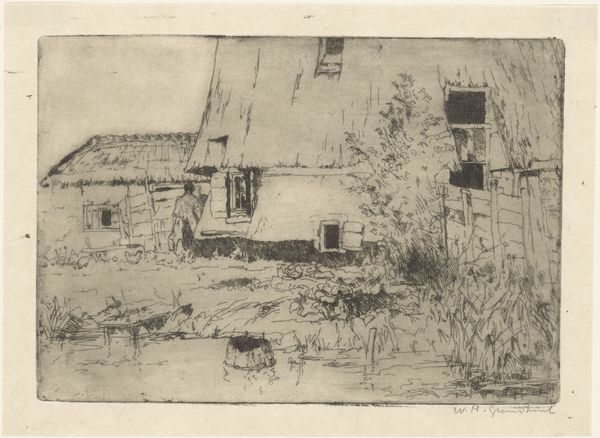
drawing, print, etching, paper, ink
#
drawing
#
dutch-golden-age
# print
#
etching
#
landscape
#
paper
#
ink
#
realism
Dimensions: height 177 mm, width 235 mm
Copyright: Rijks Museum: Open Domain
Curator: Willem Bastiaan Tholen's etching, “Farmhouse and Fruit Tree in a Landscape,” created around 1886, invites us to consider the formal properties of landscape art. Editor: My first impression is of a quiet, almost somber rural scene. The monochromatic palette lends a sense of stillness, a sort of nostalgic view into the past. Curator: The etching's composition emphasizes a structural balance. Observe the positioning of the farmhouse against the fruit tree. Note the chimney pointing up and the way that line and shade creates a textured and deep focal point for the viewer. Editor: Yes, and beyond the composition, the scene evokes the late 19th-century Dutch countryside where rural life was undergoing massive change due to the encroachment of industry. One can easily read this etching as an elegy, an idealization of a vanishing way of life. Curator: From a formalist standpoint, the narrative implications are secondary to the pure visual effect achieved through line and tonal gradation. Look, for instance, at how the artist modulates light and shadow using only etching techniques, achieving a subtle range of contrasts. Editor: But it's impossible to ignore the subject, which is rooted in the socio-economic context of its time. The small scale of the print also lends an intimate dimension, making us, the viewers, feel connected to that sense of loss, perhaps? How do we consider the implications of representing something through the printmaking? Is it a democratic process? A way of distribution? Curator: It is, ultimately, through Tholen’s masterful manipulation of technique that the themes you bring up, Editor, achieve a resonating depth and, yes, broader accessibility to a viewing public through print production. Editor: An interesting juxtaposition! So, from socio-historical vantage, considering this image prompts reflections on what and who we commemorate through artistic practices. Curator: Indeed, the artwork invites the viewer to ponder both the techniques of representation, and the way that sociohistorical context shapes them.
Comments
No comments
Be the first to comment and join the conversation on the ultimate creative platform.
